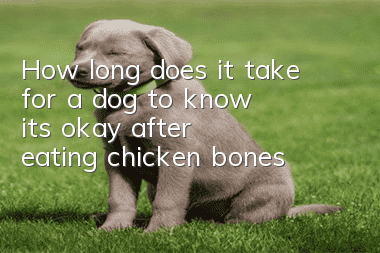Elderly dogs can’t stand up on their hind legs. What should elderly dogs pay attention to?

Change in gait and unwillingness to move
When a dog’s gait changes, it is unwilling to walk or go up and down stairs, has difficulty standing and walking, and shows obvious irritability or aggression, it is very likely that the dog will May have arthritis or osteoarthritis. Arthritis is a progressive, degenerative disease that affects older dogs and obese dogs. The disease can affect one or more joints, causing them to become swollen, stiff, and painful. At this time, we should make some changes in diet and exercise, and cooperate with drug treatment if necessary. Golden retrievers, Labrador retrievers, and poodles are generally more likely to suffer from this disease.
Bleeding, red and swollen gums
If you notice bleeding, tenderness, redness and swelling in your dog’s teeth, your dog may have gum disease. Gingivitis often precedes periodontitis. When oral bacteria turn into plaque on the teeth, the gums become inflamed. Saliva then hardens the plaque and creates tartar. The bacterial plaque and tartar on the teeth spread through the gums and cause swelling. If left untreated, gum disease can progress to periodontitis, which can spread bacteria into the bloodstream and cause serious damage to other organs.
Frequent thirst, frequent urination, weight loss
When you find that your dog is often thirsty, urinates frequently, loses weight, gets tired easily, is irritable, suffers from repeated infections, blurred vision and slow wound healing. While waiting for symptoms, you should consider whether your dog has diabetes. Diabetes is mainly caused by insufficient insulin secreted by the pancreas. The function of insulin is to promote glucose in the blood circulation to enter liver cells, muscle cells, fat cells and other tissue cells to synthesize glycogen, lower blood sugar, and promote the synthesis of fat and protein. Diabetes can be hereditary and most commonly affects dogs as young as 8 or 9 years old, and is more common in female dogs. Dog breeds that are particularly susceptible to diabetes include Samoyeds, Cairn Terriers, Pugs, Toy Poodles and Miniature Schnauzers.
Easy to fall and bump into things
In daily life, if your dog often bumps into walls or furniture or falls easily, it may have vision problems. Other symptoms may include being unable to find their own food or toys; not looking at you; being unwilling to jump on or off the couch; becoming anxious or tense, and may even begin to show aggressive tendencies. Vision loss is part of the aging process in dogs. Vision loss in older dogs has many causes, including glaucoma and macular degeneration (aging changes in the structure of the macular area). Another possible cause is cataracts. Signs of cataracts include dilated pupils and red or swollen eyes. It is recommended that owners have regular eye examinations at least every 6 to 9 months. The earlier the condition is detected, the greater the chance of successful treatment.
Polyuria and polydipsia, loss of appetite, weight loss, vomiting and diarrhea
When your dog has polyuria, polydipsia, loss of appetite, and diarrheaIf you experience symptoms such as loss of appetite, weight loss, vomiting and diarrhea, it is very likely that there is a problem with their kidneys. The kidneys remove metabolic waste from the body and maintain body balance. When kidney function is damaged, waste and toxins can accumulate in the body and cause serious damage, leading to kidney failure. It may also cause kidney stones, blockage of the urinary tract, or bladder rupture. The history of chronic renal failure is characterized by frequent occurrence in older dogs, and the course of the disease is often the result of accumulation over many years.
Unusual lumps, bleeding from the mouth, nose, or ears, and blood in the stool
When your dog develops unusual swelling, lumps or lumps that persist or continue to grow in size, and bleeding from the mouth, nose, or ears, it is usually Early symptoms of cancer. Cancer is the main cause of death for elderly dogs. Up to 50% of pets die from cancer. In China, we rarely give physical examinations to our dogs, so we often attribute their deaths to "death of old age". In fact, many of them are cancers. Other symptoms of cancer include slow wound healing, drooling, coughing, excessive panting, weight loss, loss of appetite, foul odor, limping, difficulty eating, getting tired easily, diarrhea, constipation, or blood and mucus in the stool. Cancer is a complex disease that can occur in many parts of the dog's body. Owners should monitor the overall health of their dogs. If detected early, the likelihood of successful cancer treatment is relatively high.
Cognitive decline, easy to get lost
When one day you find that your dog gets lost on a frequently traveled road, and when you call its name, it does not respond at all. , your dog may be suffering from a disease called "canine cognitive impairment syndrome" (CDS), also known as dementia. Dementia refers to a series of diseases such as memory, learning, sensory, consciousness and cognitive decline that occur in dogs as they age. The main manifestation may be disorientation and getting lost easily; you may forget familiar toys and your own name; you may no longer recognize familiar people, such as your owner; you may spend a long time staring blankly at a certain place; sometimes He walks around the house with a bit of obsessive behavior; he was very good at giving instructions before, but now he gradually loses it. Many people think that this is a normal manifestation of dogs entering old age, and there is no way to change it. In fact, if the owner can realize the dog's condition early and provide auxiliary treatment, the situation can still be effectively improved.
- The dog can't open one eye and is half-closed
- How much dog food should a 3-month-old Golden Retriever eat? How do you know how much dog food is needed?
- There are several fatal diseases in dogs. Vaccination is the only way to prevent them!
- Can golden retrievers eat kiwi fruit? What are the advantages and disadvantages of eating kiwi fruit for dogs?
- Use erythromycin for dog interdigital inflammation. What should you pay attention to when treating dog interdigital inflammation?
- Will dogs die if they eat mooncakes? Don’t give everything to dogs!
- Why do dogs cling to people? The answer is so heartwarming!
- Dogs are bitten by mosquitoes when left outside in the summer. It is best not to leave your dog outside.
- A dog with four hooves in the snow and a white color on its chest is considered auspicious.
- Is Bowang dog food suitable for Bichon Frize? There is nothing to say about high-quality dog food!



